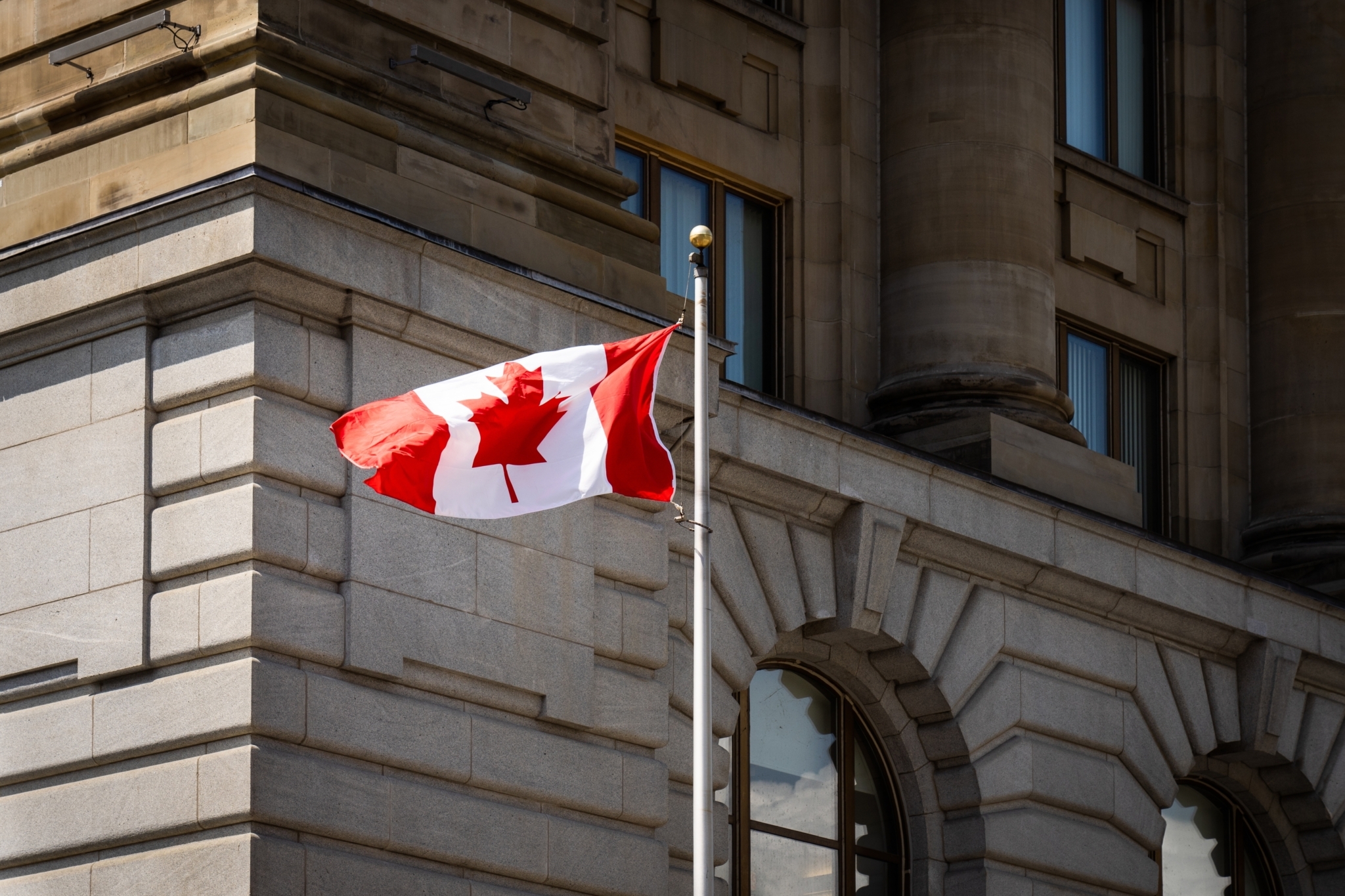November 16, 2019 | Quiet Counsel | 8 min read
Negative Interest Rates, Explained
If the idea of negative interest rates confuses you, you’re not alone. The concept seems to undermine our understanding of how lending is supposed to work: investors loan their money to governments or companies that then use it to invest in their operations.
The relationship relies on the promise that you will be compensated with interest payments for the period of time you’ve lent your money, until the principal is paid back in full when the loan matures. Negative interest rates seem to turn that notion on its head. How is it that in some markets one is now expected to PAY for the right to lend their money?
There is no consensus for why this is happening, how long it might persist, or how far it may spread. With that said, we have done our best to compile some possible answers to the following three questions:
- Why might negative rates be occurring right now?
- Where are they occurring and will they likely come to Canada and the US?
- How are they impacting investors in affected countries?
First, a quick math lesson
Before we dive in, it’s important to define a few terms. Let’s start with this formula:
nominal rates = real rates + inflation expectations
When people talk about interest rates, they are most often referring to nominal interest rates. Nominal rates are the rates which form the “yield curve” for government bonds, like the ones we show in Figure 1, and they are comprised of two components: 1) real interest rates, and 2) inflation expectations.
Real rates (or yields) are the return you will enjoy after accounting for the fact that inflation will erode some of the value of your interest payments over time. For example, if your bond investment was yielding 4% and inflation expectations were 3%, you would earn a real yield of 1%, since your interest and principal are expected to have lower purchasing power in the future.
So what does this have to do with negative interest rates?
As the formula shows, negative nominal rates can result if real rates are low (or negative) and/or inflation is expected to be low (or negative / deflationary). If investors expect deflation, that means assets are expected to be worth less in the future than today, so investors may be happy to lend their capital to a government and be charged a small negative interest rate, if they think that the purchasing power of their cash, even after the charge, will be higher in the future than keeping it under the mattress.
Nominal interest rates are currently depressed (and negative in some regions) not due to deflationary expectations, however, but rather due to low real interest rates. We therefore need to examine the potential reasons why real rates, in particular, are currently so depressed.
"A key thing to remember is that when we talk about interest rates, we’re talking about the price of government bonds."
Why might negative rates be occurring right now?
A key thing to remember is that when we talk about interest rates, we’re talking about the price of government bonds. A higher price for the bonds means a lower yield, or rate, so the discussion that follows is actually answering the question, “Why are government bond prices so high?” The simplistic (and correct) answer is that rising prices reflect more buyers than sellers – more demand than supply.
Punishing Fearfulness: Bond Market Intervention for Monetary Policy Goals. Monetary policy is meant to manage domestic economic activity and inflation. If the economy is bubbling toward a boil, the central bank will try to cool things down by increasing rates and if they want to encourage investment in productive assets, they will lower rates in order to decrease companies’ costs of financing. It’s this latter case that we’re facing now however we don’t have low policy rates because the economy is weak, but rather because people are sitting on their cash or parking it in low-risk investments like bonds. By making rates unattractive, central banks are hoping to smoke them out and force them to put their cash to work in economically productive investments.
The trouble is the global nature of capital markets means these rate cuts are not happening in a vacuum. If the Federal Reserve cuts rates in the US, it instantly makes other economies relatively less competitive pushing central banks into a race to the bottom. In this way, US rates can act as an external force on Canadian interest rate policy, pressuring cuts even when our own inflation and economic outlook is otherwise healthy.
In most countries, governments intervene to set and control short-term interest rates, but over the past decade some governments have increased their interventions to intentionally influence or control interest rates on longer-term loans. These interventions have been very significant and have had the effect of pushing interest rates on government bonds into negative territory. As shown in Figure 1, for Japan and Germany, this now extends out to nearly the 30-year mark.

The Problem of Too Much Money. The surplus of cash floating around markets is acting as a natural depressant on rates. Among the sources is quantitative easing, a monetary policy tactic through which central banks buy up long-dated government bonds, flooding the market with cash and pushing down long rates (into negative territory in some countries).
Another is demographics. Globally, baby boomers spent 50 years creating and accumulating wealth and have also enjoyed 10 years of rising markets just as they head into retirement. Lots of cash is therefore seeking lower-risk ground (i.e., shifting further out of equities into bonds), pushing the yield on risk-free government bonds down, down, down – and in some cases, negative.
A third factor driving money to “slosh around” developed markets is the barriers to investing in developing countries, which landlocks capital and further depresses yields at home. Developed countries with unique demographic challenges such as Japan and Germany feel the impact even more acutely.
Inflation vs Deflation. Investors often choose to own “risky” assets like equities to protect themselves against inflation, as equities – publicly traded businesses that participate in the economy – are expected to earn a return that will exceed the prevailing rate of inflation (to ensure they maintain the purchasing power of their money over time). If there’s a very modest outlook for inflation, as there is today, investors aren’t incentivized to take on risk. Purchasing power won’t degrade that much if they don’t put their money at risk, and as noted, should we actually see deflation, they’ll even be glad to have paid a modest fee to protect their capital.
Foreign Exchange Intervention. Sometimes a country will intentionally take actions to depress the value of its currency in order to make exports more competitive. China took this step in 2015, devaluing the Chinese yuan against the US dollar by about 2%.
Such interventions in currency markets have several important implications for real rates. Weakening the currency of a developing economy versus, say the US dollar, means (by definition) strengthening the dollar. A stronger dollar means that Americans can buy imported goods more cheaply, which lowers US inflation figures… and low US inflation means the Fed can cut US rates with less worry. The interventions themselves are also typically executed by the developing economy buying US Treasurys, driving up their price and driving down their yield.
Does Canada have negative rates?
In a word: no. As Figure 1 shows, Canada’s nominal yields clustered around 1.6% as of the end of October. While negative interest rates are a possibility in Canada, we think this is fairly unlikely over the coming 12 months for several reasons.
Core inflation in Canada is around 2%, and long-term expectations are for it to remain positive. In this environment, the Bank of Canada would need to cut rates multiple times and likely intervene in longer-term maturities in order to push bond yields negative. Because inflation is fairly mild and nominal rates are low but not near-zero, real yields remain positive. Absent a major financial crisis or deep recession, we do not believe that the Bank of Canada would need to cut rates that aggressively.
However, things can change quickly. If inflation expectations were to collapse further, potentially becoming negative in Europe and elsewhere, or if rate cuts in other countries significantly pushed up the value of the Canadian dollar, the Bank of Canada may react more aggressively. We don’t think this is particularly likely, but acknowledge these are uncertain and unprecedented times and these scenarios are worth exploring as investors.
What are the impacts of negative rates on my Canadian investment portfolio?
As of the time of writing, Canada’s rates are positive across all maturities of Government of Canada bonds. With that said, if they weren’t, the immediate impact on your investment portfolio would not be as straightforward (or dire) as “paying the government to take your money.” In the countries where rates are negative, to date at least, negative interest rates have not been applied to retail bank deposits, although there have been some instances of negative interest rates on commercial deposits. Most negative nominal interest rates are only reflected through the “interbank” market, which affects only financial institutions. Due to the requirement that these banks now pay the central bank to hold their cash, it only has the effect of depressing bank profitability.
Conclusion
When investors want safety and the central bank wants productive investment, government bonds will get expensive to the point of guaranteeing losses before that cash goes back into the economy. We’re not there in Canada or the US, and our scenario analysis suggests we would likely need to see a global recession before they might arrive. In other words, while it’s not our base case and we think it’s unlikely, never say never.
IMPORTANT NOTE: This article is not intended to provide advice, recommendations or offers to buy or sell any product or service. The information provided is compiled from our own research that we believe to be reasonable and accurate at the time of writing, but is subject to change without notice. Forward looking statements are based on our assumptions, results could differ materially.
Reg. T.M., M.K. Leith Wheeler Investment Counsel Ltd.
M.D., M.K. Leith Wheeler Investment Counsel Ltd.
Registered, U.S. Patent and Trademark Office.





